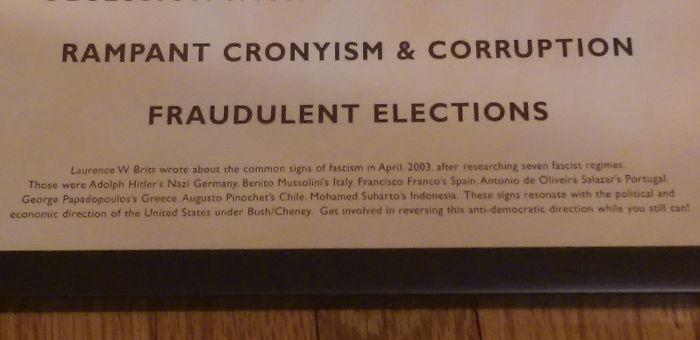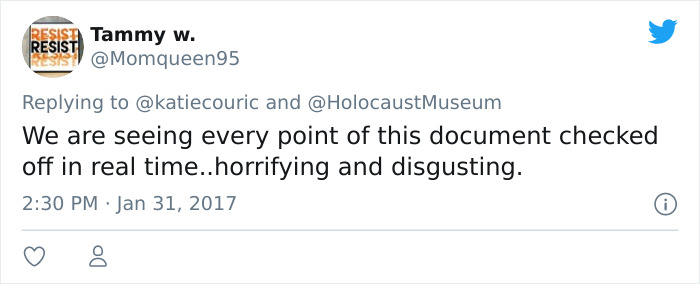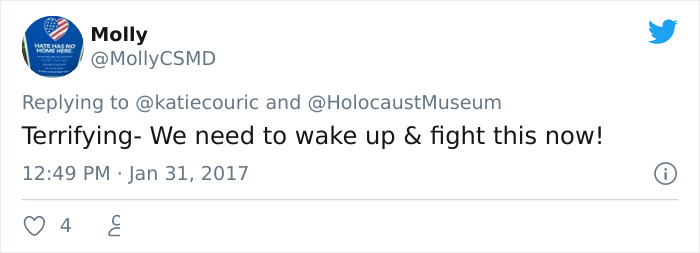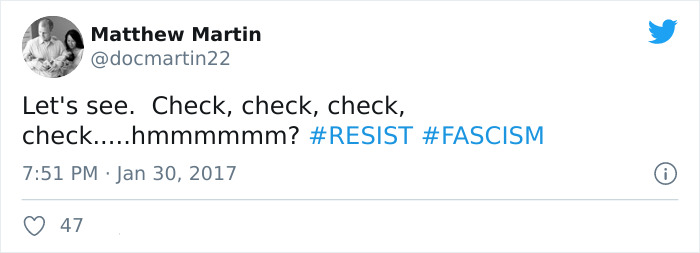Holocaust Museum Shares 14 Signs Of Fascism In Its Early Stages
A few years back, the gift shop of The United States Holocaust Memorial Museum used to sell this poster with 14 early signs of fascism listed on it. Apparently, the list was originally created by self-proclaimed amateur historian Laurence Britt in 2003 for an article published by Free Inquiry magazine. Even though the gift shop of the museum doesn’t sell this poster anymore, it still goes viral on the internet every once in a while. Why, you ask? Apparently, people find it particularly familiar at this point in American politics.
Here are 14 early signs of fascism by Laurence Britt

Image credits: TuEstUnePommeDeTerre
The poster lists 14 warning signs including powerful and continuing nationalism, disdain for human rights, identification of enemies as a unifying cause, rampant sexism, controlled mass media, obsession with national security, religion and government intertwined, corporate power protected, labor power suppressed, disdain for intellectuals and the arts, and obsession with crime and punishment as well as rampant cronyism and corruption.
“Laurence W. Britt wrote about the common signs of fascism in April 2003, after researching seven fascist regimes,” the note reads

Image credits: TuEstUnePommeDeTerre
Some people on the interwebs find these signs particularly familiar at this point in American politics

Image credits: ndla
For instance, the first early sign of fascism is described as powerful and continuing nationalism. Do we even need to talk about this one? Donald Trump’s slogans such as “America First!” or “Make America Great Again!” are well-known for being his favorite ones. Besides, back in 2018, at a campaign event in Houston, Trump said this: “You know, they have a word, it sort of became old-fashioned. It’s called a nationalist. And I say, ‘Really? We’re not supposed to use that word?’ You know what I am? I’m a nationalist. OK? I’m a nationalist.”
“Catchy slogans, pride in the military, and demands for unity were common themes in expressing this nationalism. It was usually coupled with a suspicion of things foreign that often bordered on xenophobia,” Laurence Britt writes in his article.

Image credits: photolibrarian
“The most significant common thread among these regimes was the use of scapegoating as a means to divert the people’s attention from other problems, to shift blame for failures, and to channel frustration in controlled directions,” Laurence Britt writes in his article. People have been pointing out that Trump always finds a way to blame others for the things happening in the country. For instance, the president has been placing blame for the pandemic outside the United States on the Chinese government and the World Health Organisation.
Moreover, it’s not a secret to anyone that Trump has said and written many things that were quite sexist, to say the least. From referring to a former porn actress who he allegedly had an affair with as “Horseface” to alleging that cable TV anchor Mika Brzezinski was “bleeding badly from a face-lift,” the list goes on.
You can read the full Britt’s article here.

Image credits: Wikimedia Commons
The author ends his article by saying this: “Does any of this ring alarm bells? Of course not. After all, this is America, officially a democracy with the rule of law, a constitution, a free press, honest elections, and a well-informed public constantly being put on guard against evils. Historical comparisons like these are just exercises in verbal gymnastics. Maybe, maybe not.”
Here’s how people have been reacting to this poster

Image credits: Hermetiaillucen

Image credits: Graceann319

Image credits: Momqueen95

Image credits: avbran

Image credits: MollyCSMD

Image credits: Maddy_Pappas_

Image credits: docmartin22

Image credits: mom2kns

No comments